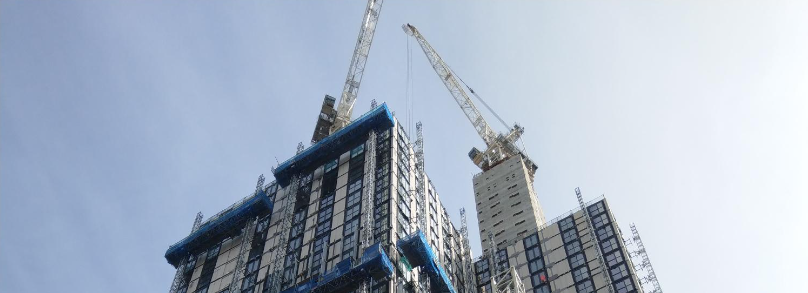
CLOCS is working in the London Borough of Croydon. Within its designated Growth Zone, LB Croydon has had no construction-related KSIs since 2017. Last year the council estimated there was a peak of around 700 HGV movements per day with zero complaints.
One of the primary reasons for this has been a commitment by LB Croydon to CLOCS. That belief gave the council the chance to put in place strict Construction Logistics Planning guidance for the Croydon Growth Zone project. Croydon set out clear rules – summarised in a two-page document. Any failure to follow the guidance meant the project being rejected.
Strict delivery times – no site traffic shall deliver to site or arrive in proximity to the site between 7.30-9.30am and 4-6.30pm except concrete deliveries. Sites are also instructed to display the hours of delivery – which means they are accountable to the public.
Accountability is key to the guidance. Where road conditions and access agreements require, developers have to commit to a Delivery Specific Legal Agreement with the borough that governs construction delivery traffic on restricted roads such as bus lanes.
Developers must commit to specific signed routes for designated Growth Zone traffic and where there’s a risk that too many vehicles will exceed a sites storage capacity the developer has to commit to the use of holding areas to avoid vehicles waiting on the public highway or circulating on holding routes.
Growth Zone Navigation App – Croydon is rolling out a navigation and communications app that will direct vehicles via approved access routes as well as highlight the location of other sites and holding areas, with appropriate diversions where necessary. The developer will make a commitment in the CLP to the use of this app.
Crossovers and Highways – any and all access to site by vehicles will be made via vehicle crossover. If a crossover does not exist, then the developer must liaise with the council and create one.
Croydon is known for its trams, therefore any project with part of the site boundary within 10m of tram track will need to consult with TfL Trams in relation to Construction Logistics arrangements as well as the London Borough of Croydon.
Monitoring is critical to effective construction logistics. Developers must agree and contribute to the installation of a monitoring CCTV camera that covers the site access and surrounding road. The CCTV is administered by the council and used for enforcement, security, and evidence collection. The alternative is for developers to agree to install CCTV on their site. Both parties agree to retain the footage for at least two weeks or agree to provide the council with live-feed access.
Minimum disruption – in a move similar to the concept of one-dig, Croydon asks all of its developers to commit to co-operation with council-led utility coordination plans to try and coordinate utility connections and specifications so that they are set up at the earliest opportunity in a single set of works.
The document is also flexible, with five revisions issued so far, each one fine-tuning conditions based on feedback from developers and the public as well as evidence gathered by the Council. With the COVID crisis, the Council was able to assist sites by temporarily relaxing certain restrictions where appropriate (e.g. traffic levels being much lower than normal).
Safety is at the heart of the Construction Logistics effort in Croydon, specifically in the Growth Zone but also across the borough. We are exceptionally proud of what we’ve achieved so far and hope to continue to take Vision Zero forward in our management of development in the borough. CLOCS is an excellent tool for making this work, with a number of observed potential incidents being kept safe precisely because of the additional safety features a CLOCS compliant vehicle must have aboard


